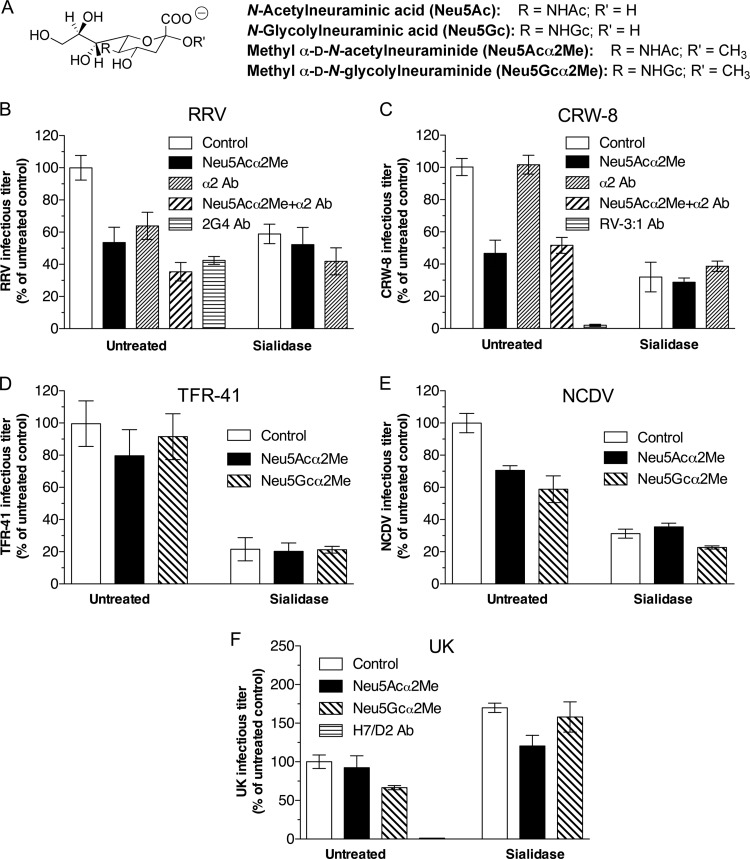FIG 2.
Effects of Neu5Acα2Me, antibody to α2β1 integrin, and Neu5Gcα2Me on animal rotavirus infection of untreated and sialidase-treated MA104 cells. (A) Chemical structures of monomeric N-acylneuraminic acids and their corresponding methyl glycosides. (B to F) Rotavirus reacted with 10 mM Neu5Acα2Me, 10 mM Neu5Gcα2Me, or diluent (control) was adsorbed to cells treated with sialidase (0.52 U/ml) and/or α2β1 antibody (20 μg/ml). Infected cells were enumerated at 16 h postinfection following indirect immunofluorescent staining. Rotavirus infectious titers are expressed as a percentage of the titers produced in control untreated cells. These control infectious titers, expressed as mean FCFU/ml ± SD, were 1.2 × 104 ± 0.2 × 104 (B), 9.0 × 103 ± 0.5 × 103 (C), 1.1 × 104 ± 0.1 × 104 (D), 2.6 × 104 ± 0.1 × 104 (E), and 1.2 × 104 ± 0.2 × 104 (F). Positive control neutralizing monoclonal antibodies (Ab) were 2G4 (RRV), RV-3:1 (CRW-8) and H7/D2 (UK). No positive-control antibody was available for TFR-41 or NCDV. Cells treated with isotype control antibody MOPC21 produced virus titers that were indistinguishable from the titers in untreated cells.

